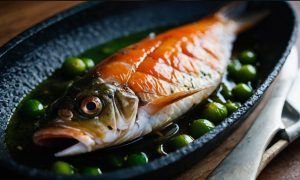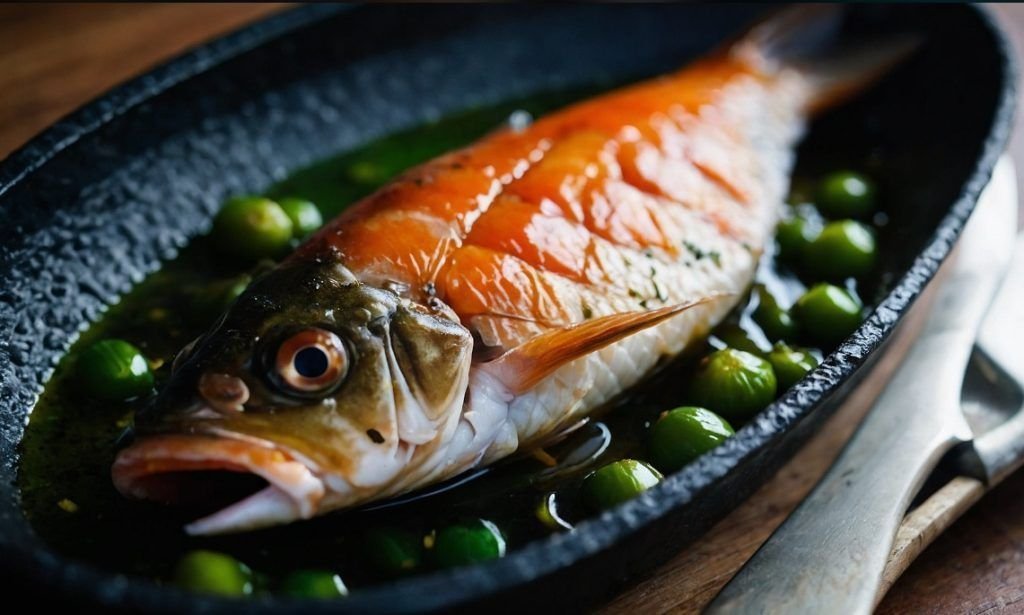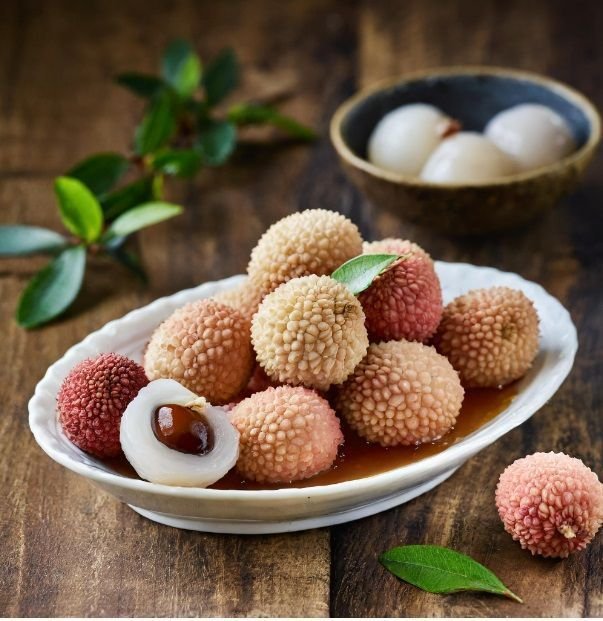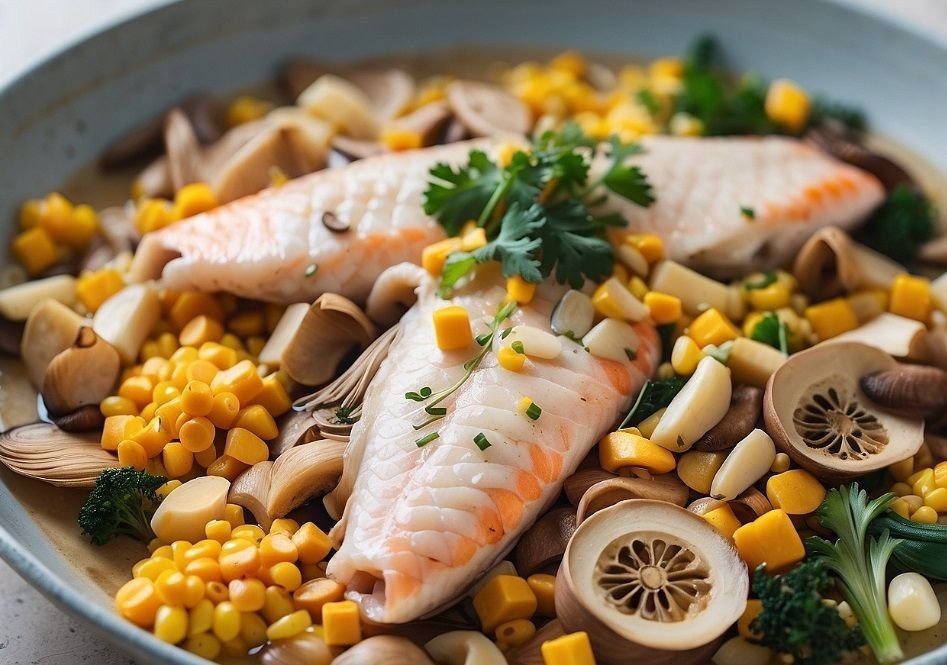Scallion stuffed fish
Scallion stuffed fish
Chinese Scallion-Stuffed Fish: A Delectable Recipe from East China
Stuffed fish recipes. Trending recipes from the Chinese Cuisine.
Ingredients:
For the Stuffed Fish:
- 1 whole fish (such as sea bass or tilapia), cleaned and scaled
- 4-5 stalks of scallions (green onions), finely chopped
- 3 cloves of garlic, minced
- 1 tablespoon ginger, minced
- 2 tablespoons soy sauce
- 1 tablespoon Shaoxing wine (or dry sherry)
- 1 tablespoon sesame oil
- Salt and pepper to taste
For Garnish:
- Additional scallions, thinly sliced
- Fresh cilantro leaves
Instructions:
1. Prepare the Fish – Chinese cuisine:
- Rinse the whole fish thoroughly under cold water and pat dry with paper towels.
- Using a sharp knife, make a series of diagonal cuts along both sides of the fish, about 1 inch apart, ensuring not to cut all the way through the bone. This will allow the fish to cook evenly and absorb the flavors of the stuffing.
2. Prepare the Stuffing:
- In a mixing bowl, combine the finely chopped scallions, minced garlic, minced ginger, soy sauce, Shaoxing wine, sesame oil, salt, and pepper. Mix well to combine, creating a fragrant and flavorful stuffing mixture.
3. Fish stuff:
- Stuff the prepared stuffing mixture into the cavity of the fish, pressing it firmly to fill the cavity completely. Ensure that the stuffing is evenly distributed throughout the fish.
4. Marinate the Fish:
- Place the stuffed fish in a shallow dish or on a large plate. Drizzle a little extra soy sauce and sesame oil over the surface of the fish. Allow the fish to marinate for at least 30 minutes to allow the flavors to infuse.
5. Steam the Fish:
- Prepare a steamer by filling a wok or large pot with water and bringing it to a gentle boil.
- Carefully place the stuffed fish onto a heatproof plate that fits inside the steamer basket.
- Once the water is boiling, place the plate with the fish into the steamer basket and cover tightly with a lid.
- Steam the fish for 15-20 minutes, depending on the size of the fish, or until the flesh is opaque and flakes easily with a fork.
6. Garnish and Serve:
- Once the fish is cooked, carefully remove it from the steamer and transfer it to a serving platter.
- Garnish the fish with thinly sliced scallions and fresh cilantro leaves for a pop of color and freshness.
- Serve the Chinese scallion-stuffed fish hot, accompanied by steamed rice and your favorite stir-fried vegetables.
7. Enjoy Your Delicious Homemade Dish:
- Delight in the succulent and flavorful Chinese scallion-stuffed fish, where the tender flesh of the fish is complemented by the aromatic scallion, ginger, and garlic stuffing. This dish is sure to impress your family and friends with its exquisite flavors and elegant presentation.

The Culinary Delight of Scallions in Asian Cuisine
Introduction: Scallions, also known as green onions or spring onions, are a ubiquitous and beloved ingredient in Asian cuisine. With their mild onion flavor, vibrant green color, and versatile nature, scallions play a crucial role in adding depth, aroma, and freshness to a wide variety of dishes across different Asian cultures.
From stir-fries to soups, dumplings to noodles, scallions are cherished by chefs and home cooks alike for their culinary versatility and ability to elevate the flavors of any dish. In this comprehensive article, we will explore the cultural significance, nutritional benefits, culinary uses, and culinary heritage of scallions in Asian cuisine.
1. Cultural Significance: Scallions have been cultivated and consumed in Asia for thousands of years, with their culinary use dating back to ancient civilizations such as China, Japan, and Korea. In many Asian cultures, scallions are symbolic of new beginnings, growth, and vitality, making them a popular ingredient in celebratory dishes and festive meals.
Scallions are also associated with prosperity and good fortune, making them an essential component of traditional dishes served during Lunar New Year celebrations and other auspicious occasions.
2. Culinary Uses: Scallions are prized for their versatility and adaptability in cooking, lending their mild onion flavor and vibrant color to a wide range of dishes. Some common culinary uses of scallions in Asian cuisine include:
- Aromatics: Scallions are often used as aromatics in stir-fries, soups, stews, and sauces, where they impart a subtle onion flavor and aromatic fragrance to the dish.
- Garnish: Fresh scallions are commonly used as a garnish to add color, texture, and freshness to finished dishes. They are thinly sliced and sprinkled over noodles, rice dishes, dumplings, and salads for a pop of flavor and visual appeal.
- Flavoring: Scallions can be used as a primary flavoring agent in dishes such as scallion pancakes, scallion oil noodles, and scallion tofu, where their distinct flavor takes center stage.
- Ingredient: Scallions are often used as a key ingredient in marinades, dipping sauces, condiments, and pickles, where they add depth and complexity to the overall flavor profile of the dish.
3. Nutritional Benefits: Scallions are not only flavorful but also packed with essential nutrients, vitamins, and minerals that contribute to overall health and well-being. Some of the key nutritional benefits of scallions include:
- Vitamins: Scallions are rich in vitamins A, C, and K, which support immune function, skin health, and bone health, respectively.
- Antioxidants: Scallions contain antioxidants such as flavonoids and carotenoids, which help protect cells from damage caused by free radicals and oxidative stress.
- Fiber: Scallions are a good source of dietary fiber, which aids digestion, promotes satiety, and helps regulate blood sugar levels.
- Minerals: Scallions contain essential minerals such as potassium, calcium, and magnesium, which support heart health, muscle function, and nerve function.
4. Culinary Heritage: Scallions are deeply ingrained in the culinary heritage and traditions of Asian cultures, where they are valued for their flavor, versatility, and nutritional benefits.
In China, scallions are a fundamental ingredient in Cantonese, Sichuan, and Shanghainese cuisine, where they are used in a variety of dishes ranging from dumplings to hot pots.
In Japan, scallions are commonly used in sushi, sashimi, and noodle dishes, where they add a refreshing crunch and mild onion flavor. In Korea, scallions are a key component of kimchi, bulgogi, and various banchan (side dishes), where they contribute to the complexity of flavors and textures.
5. Culinary Tips:
- When selecting scallions, choose ones that are firm, crisp, and bright green in color, with no signs of wilting or yellowing.
- To prepare scallions, trim off the root end and any wilted or discolored parts. Rinse the scallions under cold water to remove any dirt or debris, then pat dry with paper towels before using.
- To store scallions, wrap them in a damp paper towel and place them in a plastic bag or container in the refrigerator. They will keep for up to one week.
Scallions are a culinary treasure in Asian cuisine, prized for their versatility, flavor, and nutritional benefits. From their role as aromatics and garnishes to their use as primary flavoring agents and ingredients, scallions add depth, freshness, and vibrancy to a wide range of dishes across different Asian cultures.
By exploring the cultural significance, culinary uses, nutritional benefits, and culinary heritage of scallions in Asian cuisine, we gain a deeper appreciation for this humble yet essential ingredient and its contribution to the rich tapestry of flavors and traditions that define Asian culinary heritage.





